Last year, a rover explored volcanic caves and craters as part of the Pangaea-X test campaign. With just a few weeks to go until the second edition (18-23 November), robotics researcher Javier Hidalgo-Carrió looks back at the challenges of guiding the alien-looking Asguard rover in Lanzarote – and what impact this will have on our next steps into space.
If you want to prepare for the future of space exploration, you must put your rover to its limit. The Entern project joined Pangaea-X for the first time in 2017, with a four-wheeled explorer that can autonomously move about while mapping the surrounding environment known as the Asguard IV rover.
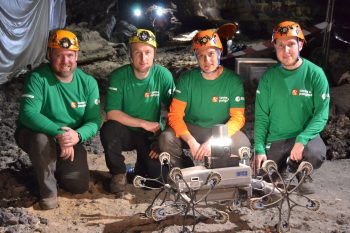
Team picture with the rover. From left to right, Steffen Planthaber, Matthias Maurer, Javier Hidalgo-Carrió and Sascha Arnold. Credits: DFKI GmbH
Caves and craters are good candidates for hosting human habitats on other planetary bodies. At the same time, they are extremely difficult places for a robot to explore due to the hazardous terrain, poor visibility and limited communication with the outside world.
Pangaea-X provided the opportunity for us to test Asguard under realistic conditions and make contact with scientists and astronauts – the ultimate users of robots in future space missions.
Land of volcanoes
You could be forgiven for thinking Lanzarote really is the surface of the Moon or Mars. The well-preserved volcanic features of this Spanish island, also known as the island of a thousand volcanoes, are unique in Europe. It is this landscape, along with its proximity to continental Europe, its logistics and its stable year-round climate, that make the island an unbeatable place to test robotic systems for space.
Testing the robot’s performance in a realistic scenario on Earth is vital to ensure its reliability in space. We arrived in Lanzarote after a whole year of rover training. Robotic field tests are a lot like preparing for a sports competition. We simulate different scenarios over and over again to achieve the best results during the campaign. The exercise helped us evaluate the strengths and limitations of the rover.
Robot navigation
One of our goals was to improve the autonomy of the rover in lava tubes. Lava tubes are planetary caves, and here is the interesting bit: cave systems have also been found on the Moon and Mars.
The robot can operate autonomously, but also allows for teleoperation by a human. When navigating on its own, Asguard is constantly constructing a 3D model of the environment. It creates a “traversability map” that indicates where it can safely go, the obstacles and the yet unknown areas. We also tested the semi-autonomous mode, setting targets for the robot.
We found it very productive to test Asguard with ESA astronaut Matthias Maurer. He commanded the rover to drive in the Cueva de Los Verdes lava tube. Having an astronaut in the loop made the system more effective, as he could set the goal in advance and re-plan during the scouting.
We could actually sense that he had fun reaching the exploration targets, and he appreciated the autonomous mode when the rover was out of sight. This was a very rewarding moment for the Entern team.
Falls and internet connection
Navigating the caves was, at the same time, the best and most challenging part of the test. We were impressed by how difficult it was to navigate the collapsed structures of the lava tube. In some of these areas the robot could not even move forward.
One time, the rover tipped over very badly in Los Jameos cave. One of the sensors was hit by a rock and we all thought the robot was completely broken. It looked like it was the end of the campaign for us. However, Asguard was more robust than we expected – the sensor head was functional and we continued with the test. This critical situation helped us gain confidence in our system, but also got us thinking about other locomotion alternatives for the future, such as legs or hopping robots.
The longest expedition of the rover was conducted without direct line of sight over a WiFi communication link. Asguard kept transmitting a 3D map that allowed us telecommand it along la Cueva de los Verdes. We enjoyed those test so much that we were almost locked up inside the cave. Time flies inside a lava tube!
We learnt a lot from Pangaea-X about how to test the rover on the field, and how to better prepare for it in terms of scheduling. The chance to get feedback from astronaut Matthias Maurer was priceless.
We are really looking forward to more experiments involving teleoperations. An astronaut commanding a rover on Earth from the International Space Station? Our answer is: why not?
Javier Hidalgo-Carrió
German Research Center for Artificial Intelligence (DFKI GmbH)

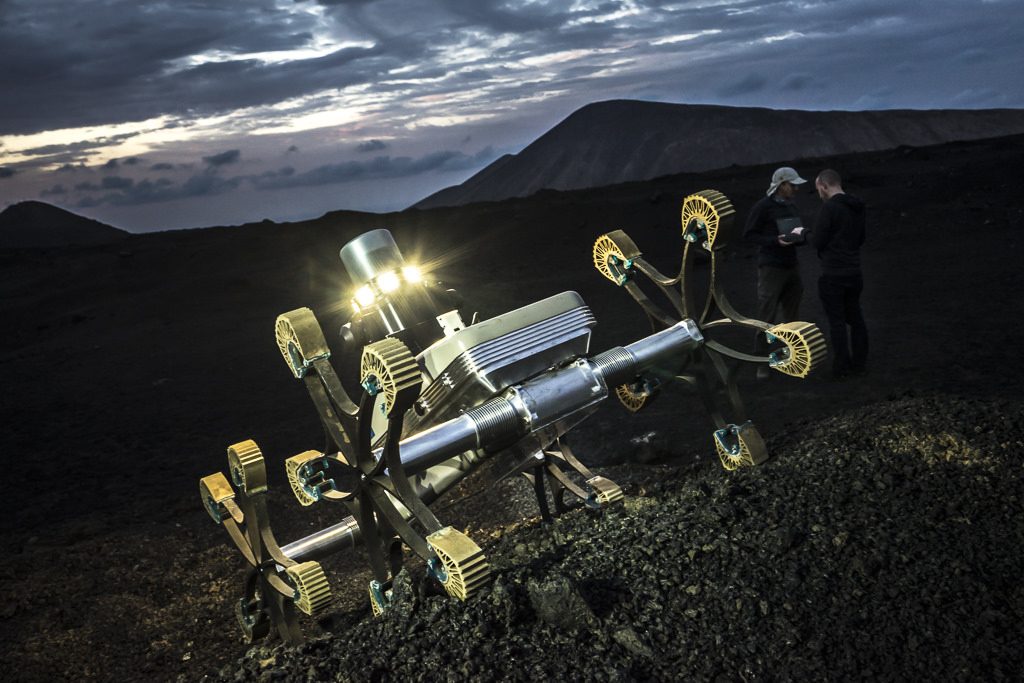
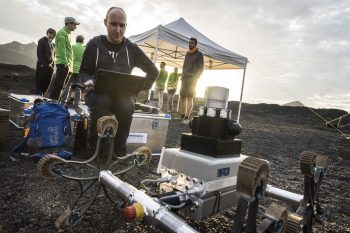
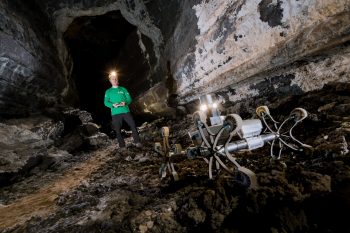
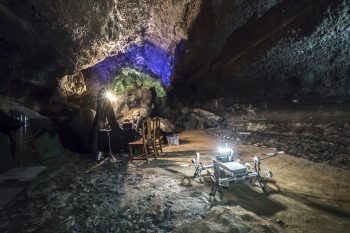
Discussion: no comments